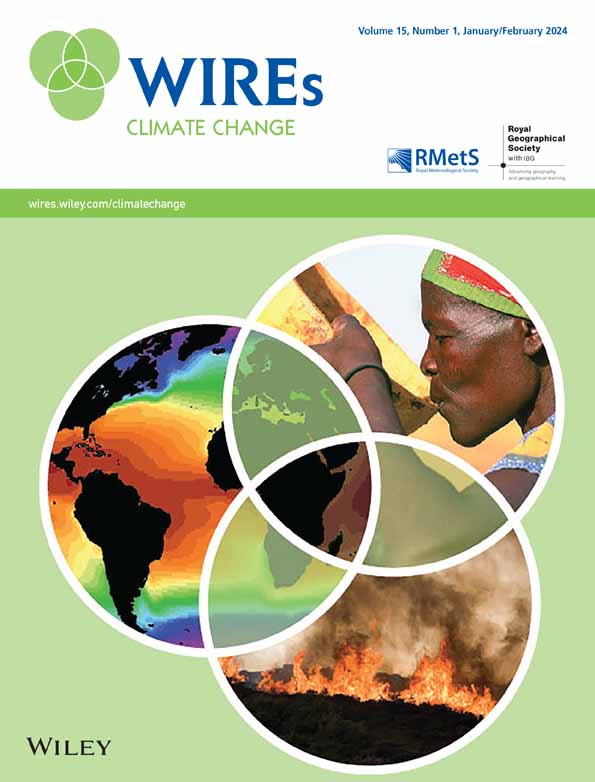Mangrove forests under climate change in a 2°C world
IF 10.3
1区 环境科学与生态学
Q1 ENVIRONMENTAL STUDIES
引用次数: 14
Abstract
The world's nations are committed to keeping global temperature rises to less than 2°C to avoid the worst impacts of climate change. Such a target is crucial for mangrove forests, because they are located primarily in tropical and subtropical regions that are expected to see large changes in climatic conditions; their intertidal location and sensitivity to changes in environmental conditions means that mangroves are expected to be on the front line of climate change impacts. We conceptualize what a 2°C world might look like for mangroves, and in particular the potential negative and positive responses of the mangrove ecosystem to anticipated changes in future atmospheric CO2 concentrations, temperature, sea level, cyclone activity, storminess and changes in the frequency, and magnitude of climatic oscillations. We also assess the spatial distribution of such stressors, their relative contributions to mangrove ecosystem dynamics, and discuss the challenges in attributing mangrove ecosystem dynamics to climate change versus other global change stressors. Such knowledge can help future‐proof conservation and restoration activities, improve the Intergovernmental Panel on Climate Change's confidence level ascribed to climate change impacts on mangrove forests, and highlight the key temperature thresholds beyond which the future of the world's mangroves is less certain.2°C世界气候变化下的红树林
世界各国致力于将全球气温上升控制在2°C以下,以避免气候变化的最严重影响。这一目标对红树林至关重要,因为红树林主要位于热带和亚热带地区,预计气候条件会发生重大变化;红树林的潮间带位置和对环境条件变化的敏感性意味着红树林预计将处于气候变化影响的前线。我们概念化了红树林的2°C世界可能是什么样子,特别是红树林生态系统对未来大气二氧化碳浓度、温度、海平面、气旋活动、风暴以及气候振荡频率和幅度变化的潜在负面和积极反应。我们还评估了这些压力源的空间分布及其对红树林生态系统动力学的相对贡献,并讨论了将红树林生态系统动态归因于气候变化与其他全球变化压力源的挑战。这些知识可以帮助经得起未来考验的保护和恢复活动,提高政府间气候变化专门委员会对气候变化对红树林影响的信心水平,并突出世界红树林未来不太确定的关键温度阈值。
本文章由计算机程序翻译,如有差异,请以英文原文为准。
求助全文
约1分钟内获得全文
求助全文
来源期刊

Wiley Interdisciplinary Reviews: Climate Change
METEOROLOGY & ATMOSPHERIC SCIENCES-
CiteScore
20.00
自引率
2.20%
发文量
58
审稿时长
>12 weeks
期刊介绍:
WIREs Climate Change serves as a distinctive platform for delving into current and emerging knowledge across various disciplines contributing to the understanding of climate change. This includes environmental history, humanities, physical and life sciences, social sciences, engineering, and economics. Developed in association with the Royal Meteorological Society and the Royal Geographical Society (with IBG) in the UK, this publication acts as an encyclopedic reference for climate change scholarship and research, offering a forum to explore diverse perspectives on how climate change is comprehended, analyzed, and contested globally.
 求助内容:
求助内容: 应助结果提醒方式:
应助结果提醒方式:


